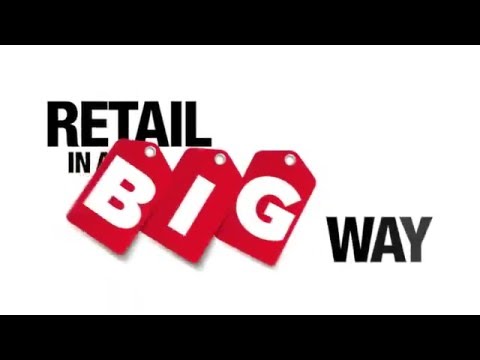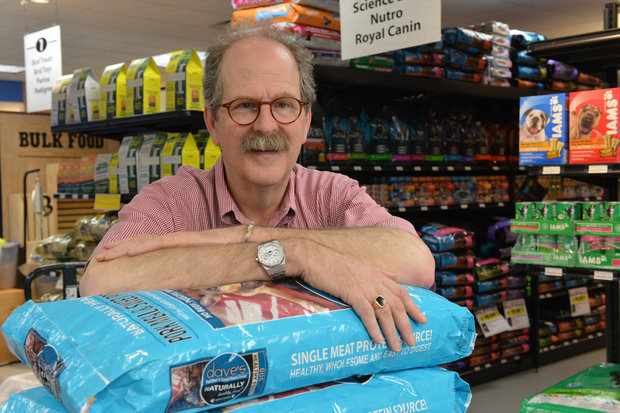NRF Retail’s Big Show 2016: Day One Wrap-Up
Sunday was the first day of the National Retail Federation (NRF) Retail’s Big Show 2016, and members of the Fung Business Intelligence Centre – Global Retail and Technology (FBIC) team attended conference sessions and walked the show floor.
We’ll walk you through the key sessions from the day in this blog post and for the full report in detail, click here.
Opening Remarks
“Retail is a great place to be in,” began Kip Tindell, NRF Chairman and CEO of The Container Store, as he kicked off the event Sunday morning. The show promises to provide retailers with the tools they need to deal with a fast-changing retail economy. Retailers today are facing a growing number of trends that are challenging the foundation of their business. They will have to react, or they will become irrelevant. But how can retailers face these challenges? Maybe they can learn from the hospitality business.

“Hospitality’s Secrets to Success”
Stephen Joyce, President and CEO of Choice Hotels, said the hospitality business is doing very well, even though it faces many of the same challenges that retail is facing.
Joyce’s recommendations for retail companies:
- Make heavy use of internal and external data.
- Provide true multi-channel experience.
- Reward customers for loyalty.
- How to deal with the threat from Amazon?
Click through for the full list in detail.
“Lessons from Retail Titans”
Dave Ratner, NRF board member and President and C hief Instigating Officer of Dave’s Soda and Pet City shared lessons he has learned over the years from a number of retail titans:
hief Instigating Officer of Dave’s Soda and Pet City shared lessons he has learned over the years from a number of retail titans:
Ratner had a positive experience in a Neiman Marcus store, and reached out to Karen Katz, President and CEO, Neiman Marcus Group, to let her know. Katz then emailed the store’s staff and shared the positive experience. Takeaway – when someone says something nice about an employee, management should make sure the team knows.
Read our full report for all of Ratner’s tips he learned from Coca-Cola, Kohl’s, Staples and more.
“How to Conquer the World: Overcoming Market Entry Challenges”
Speakers: Jonathan Gold, VP, Supply Chain and Customs Policy, NRF and Bruce Harsh, Director of Distribution and Supply Chain, US Department of Commerce
The two industry experts encouraged large corporations and small businesses to overcome international market entry challenges with the right resources. They said that knowing the macro environment, consumer behaviors and the regulatory environment is the important first step in preparing for market entries, and they introduced some valuable market information resources provided by the US government, multilateral organizations and research institutions.
Click through to our report for full insights from Jonathan Gold and Bruce Harsh.
“Punching Above Your Weight: Technology Innovation”
Nikki Baird, Industry Analyst at RSR Research, said that retailers cannot successfully compete unless they leverage two technology trends: the cloud and digital commerce. She extolled the benefits of cloud computing, saying it offers a good return on investment since you only have to pay for what you use.
More on the cloud and digital commerce from Baird.
“Li & Fung: Delivering Value Through Technology”
 I kicked off our panel session at NRF 16 with an introduction of the research resources Fung Business Intelligence Centre provides to both the company and the overall retail community. Having recently attended the Consumer Electronics Show (CES 2016), I also shared the top 16 technology trends for 2016 with the audience.
I kicked off our panel session at NRF 16 with an introduction of the research resources Fung Business Intelligence Centre provides to both the company and the overall retail community. Having recently attended the Consumer Electronics Show (CES 2016), I also shared the top 16 technology trends for 2016 with the audience.
Robert Burton, Senior Executive VP of LF Sourcing at Li & Fung, extended the discussion of technology to the supply chain. He introduced the concept of the “smart” supply chain. With Li & Fung’s broad global factory network, the company is able to provide an integrated, cloud-based supply chain solution that tracks cotton supply, fabric manufacturing and garment manufacturing. The data collected in the process significantly improves production efficiency. Labor costs have increased by 20% in some major sourcing destinations, and a digital supply chain has helped some retailers improve production efficiency to offset some of these increased labor costs.
Lee Adams, Global Sales Manager of Retail Technology at Catalyst (a Li & Fung Company), wrapped up the session by highlighting more value-added services offered by his business division. Catalyst is able to use RFID technology to improve inventory accuracy and customer interaction.
“Get Big Data Results Using Just Basic POS Data”
Professor Irad Ben-Gal, who teaches analytics at Stanford University and is the active Chairman and cofounder of analytics company C-B4, addressed four big misconceptions about Big Data:
Myth 1: It’s about volume
Myth 2: The more granular, the better!
Myth 3: Big Data is good data
Myth 4: More data means better understanding
Read on for details of each Myth.
“Millennials Want More: Retail Concepts with Purpose”
 Speaker: Marcos Gouvêa de Souza, Founder and Director General, GS&MD
Speaker: Marcos Gouvêa de Souza, Founder and Director General, GS&MD
There are more than 2 billion millennials globally and half of them are from China. This age group, on average, comprises 20%–30% of the total population of each country. By 2025, millennials will make up 75% of the world’s workforce.
The generation is special in many aspects:
- It is multiconnected.
- Their spending power
- Experience is the new status symbol for this generation
- They are looking for retailers and brands with purpose.
More on Millennials.
“Storming Silicon Valley: The Leading Edge of Retail Tech Labs”
This panel discussion included members from retailers’ innovation labs, separate divisions formed to nurture new technology.
One speaker, Douglas Weich, CEO of retail strategy and implementation company Sophelle, outlined seven habits of innovative mid-sized retailers:
- Prepare for organizations, partners and customers.
- Partner: do not go it alone.
- Test: successful companies are great at it or partner with those who are.
- Invest in tools and processes that support innovation.
- Pivot: do not get locked into a solution or a goal.
- Fail fast and cheap: factor in the cost of failure.
- Learn: innovation is a marathon, not a sprint. Have a formalized process of learning.
Follow along with us on Twitter we as we tweet from #nrf16 and stay tuned for additional wrap-up reports as the show progresses.
